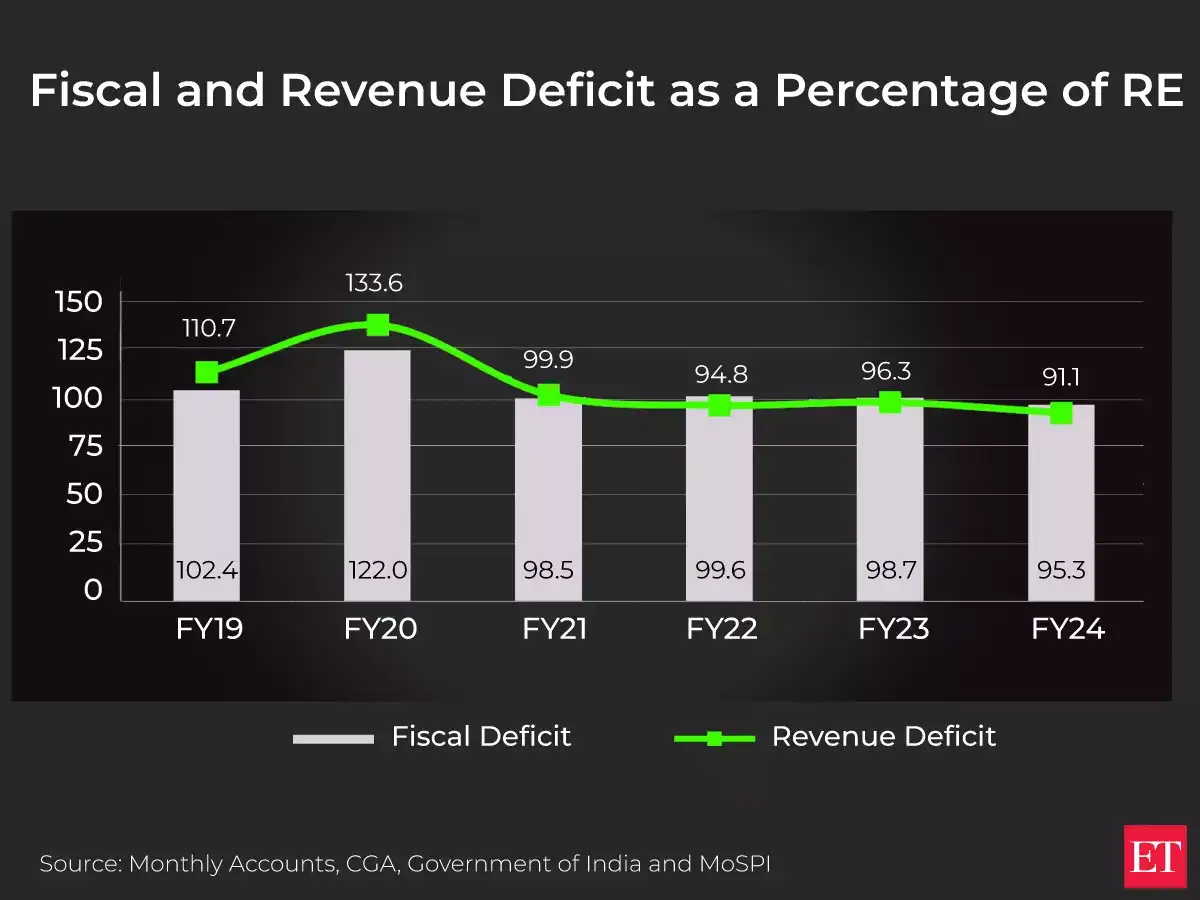The first full Budget of the Modi 3.0 government is likely to be a tricky affair as it tries to balance between its commitment to go ahead with a capex-led economic push and the needs of various other segments of the economy, especially rural spending, healthcare and education. The fact that it doesn’t have a majority on its own will only make the task more complicated.
The government has received widespread accolades in its efforts to cut down on wasteful expenditure and stick to the fiscal glide path.
For FY24, the fiscal deficit figure of 5.6 per cent was better than the revised estimate of 5.8 per cent as presented in the Interim Budget. This is mainly on account of better than anticipated revenues and lesser than expected revenue expenditure.
Fiscal deficit, the difference between revenue and expenditure, is the most sought after number in the Budget document and is closely parsed by economists and investors to check govt’s fiscal health.
 ET Online
ET OnlineThe improvement in compliance in tax collections and strong economic momentum have boosted the government’s kitty. Along with the RBI windfall, the current fiscal’s target of 5.2 per cent looks achievable.
In the recently held pre-budget meeting with leading economists, the focus was on sticking to the fiscal glide path and not giving in to populism.The glide path aims at bringing the fiscal deficit target to 4.5 per cent by 2025-26. A lot will also depend on the success of the government’s asset sale programme. Success in achieving the fiscal deficit goals would mean lesser borrowings leaving more funds available for private investment to grow.
With a coalition government now in place, the budget will need to balance growth objectives with coalition partners’ priorities, aiming to maintain economic stability and foster development.
This budget is expected to be a pivotal document, shaping India’s economic future amid a dynamic political landscape.










